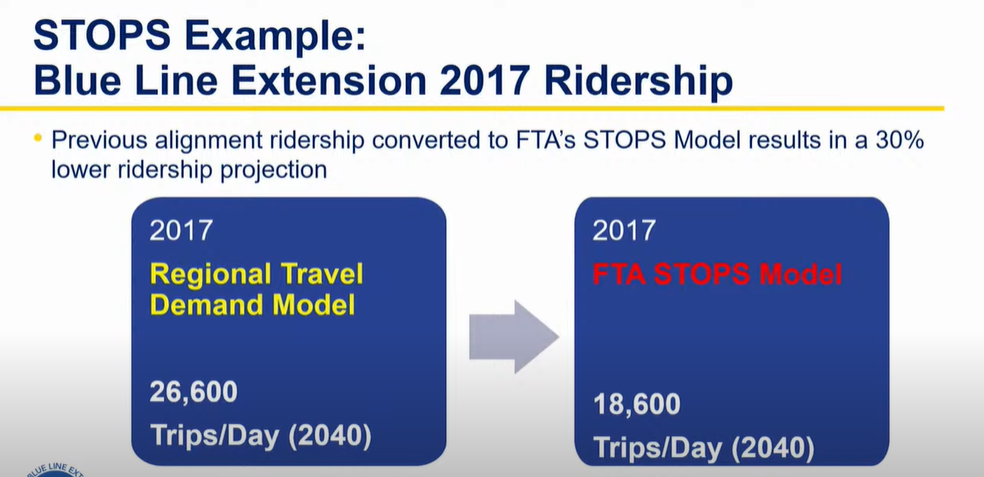Blue Line Extension Ridership Projections Drop 30 Percent
Ridership projections for the Bottineau Blue Line light-rail extension project are expected to decrease in a new report.
Project officials recently told the Blue Line Corridor Management Committee — a group of elected officials and stakeholders along the line’s proposed route — that a new ridership estimation model and the COVID-19 pandemic may drive down ridership projections.
The Federal Transit Administration (FTA) is now requiring transit planners across the county to use a standardized, conservative ridership estimation model. Previously, Metro Transit officials used a locally-derived formula to estimate ridership statistics.
“It’s intended to level the playing field so we’re all using the same criteria,” said Christine Beckwith, Blue Line project director. “Everybody’s getting rated the same way … the FTA’s not interested in overestimating ridership.”
The planned route starts in downtown Minneapolis, extends through Robbinsdale and Crystal, and ends in Brooklyn Park.

A graphic from a Metro Transit slide show displays differences in ridership projections.
Funding Process for LRT
The Bottineau Blue Line project is one of 65 significant transit projects nationwide being considered by the FTA. The majority of those projects are bus rapid transit, but seven are light rail lines.
The FTA ranks projects for funding priority based on a variety of factors.
One of those factors is ridership. However, project officials can’t offer a formal ridership projection until they have an established route.
The Blue Line extension route has not been finalized.
Blue Line Ridership Estimates Drop By 30 Percent
Project engineers applied the FTA’s standardized projection model to estimate 2040 ridership for an older Blue Line route design.
Those statistics dropped from 26,600 trips per day to 18,600 trips per day.
“That’s a 30 percent lower ridership forecast,” Beckwith said.
The FTA says “regional models can tend to be optimistic” about rider projections, Beckwith noted.
Project officials expect to have updated ridership estimates for a the new route by early next year.
“When we begin to convert this model into the [FTA] model, you will see ridership drop because the FTA is asking us, requiring us take blended pre-COVID and post-COVID data,” Beckwith said. “You will see ridership drop — you will absolutely see it drop.”


